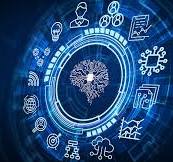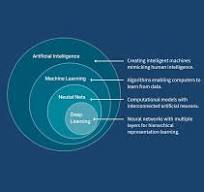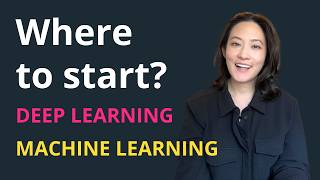The Impact of AI and Machine Learning on Modern Technology
Artificial Intelligence (AI) and Machine Learning (ML) are two of the most transformative technologies of the 21st century. They have revolutionized industries, enhanced productivity, and opened new avenues for innovation. But what exactly are AI and ML, and how are they shaping our world?
Understanding AI and ML
Artificial Intelligence refers to the simulation of human intelligence in machines that are programmed to think like humans and mimic their actions. It encompasses a range of technologies that enable computers to perform tasks typically requiring human intelligence, such as visual perception, speech recognition, decision-making, and language translation.
Machine Learning is a subset of AI that involves the use of algorithms and statistical models to enable computers to improve their performance on tasks through experience. Instead of being explicitly programmed, ML systems learn from data inputs to make predictions or decisions without human intervention.
Applications Across Industries
The applications of AI and ML span numerous industries:
- Healthcare: AI-driven tools assist in diagnosing diseases more accurately by analyzing medical images or predicting patient outcomes based on historical data.
- Finance: Machine learning algorithms detect fraudulent transactions by identifying patterns that deviate from normal behavior.
- Retail: Personalized recommendations powered by AI enhance customer experiences by suggesting products based on browsing history.
- Manufacturing: Predictive maintenance uses machine learning to forecast equipment failures before they occur, reducing downtime.
The Benefits of AI and ML
The integration of AI and ML into various sectors offers several benefits:
- Increased Efficiency: Automation reduces the time required for complex tasks, allowing businesses to operate more efficiently.
- Improved Accuracy: Machines can process vast amounts of data with high precision, minimizing errors compared to manual processes.
- Scalability: Businesses can scale operations quickly without proportionally increasing costs due to automated processes.
The Challenges Ahead
Despite their advantages, AI and ML present challenges that need addressing:
- Ethical Concerns: The deployment of these technologies raises questions about privacy, bias in decision-making algorithms, and job displacement.
- Lack of Transparency: Many machine learning models operate as “black boxes,” making it difficult for humans to understand how decisions are made.
- Sustainability Issues: Training large-scale models requires significant computational resources, impacting energy consumption.
The Future Outlook
The future for AI and ML looks promising as ongoing research continues to push boundaries. Innovations such as explainable AI aim to make machine decision-making more transparent. Additionally, efforts are underway to develop sustainable computing practices for training models efficiently. As these technologies evolve, they will likely become even more integrated into everyday life, driving further advancements across all sectors.
The journey with AI and ML is just beginning. As these fields continue developing rapidly, they promise a future where technology becomes even more intertwined with our daily lives—enhancing capabilities while presenting new challenges for society to navigate responsibly.
Understanding AI and ML: Common Questions and Answers
- Is ChatGPT AI or ML?
- What is AI and ML in layman’s terms?
- What are the examples of AI and ML?
- What is the relationship between AI and ML?
- What is AI ML technology?
Is ChatGPT AI or ML?
ChatGPT is a product of both AI and ML technologies. It is an example of artificial intelligence because it simulates human-like conversation, understanding, and response generation. At its core, ChatGPT is built using machine learning techniques, specifically a type of model known as a transformer, which has been trained on vast amounts of text data to learn patterns in language. This training allows it to generate coherent and contextually relevant responses to user inputs. Therefore, while ChatGPT is fundamentally an AI application due to its ability to perform tasks associated with human intelligence, it relies heavily on machine learning algorithms to achieve this functionality.
What is AI and ML in layman’s terms?
AI, or Artificial Intelligence, in layman’s terms, refers to the capability of a machine to imitate intelligent human behavior. It’s like giving a computer the ability to think and make decisions on its own, similar to how a person would. Machine Learning (ML), on the other hand, is a way to achieve AI by allowing computers to learn from data and improve their performance over time without being explicitly programmed for each task. Think of it as teaching a computer by showing it lots of examples so it can figure out patterns and make predictions or decisions based on new information it encounters.
What are the examples of AI and ML?
Artificial Intelligence (AI) and Machine Learning (ML) are increasingly prevalent in various aspects of daily life, showcasing their versatility across different applications. Examples of AI include virtual assistants like Siri and Alexa, which use natural language processing to understand and respond to user queries. In the realm of ML, recommendation systems on platforms such as Netflix and Amazon analyze user behavior to suggest movies or products tailored to individual preferences. Autonomous vehicles also rely heavily on AI and ML technologies to interpret sensor data and navigate safely. In healthcare, AI-powered diagnostic tools assist doctors by analyzing medical images with high accuracy, while in finance, ML algorithms detect fraudulent activities by identifying unusual patterns in transaction data. These examples illustrate how AI and ML enhance efficiency, personalization, and decision-making across various industries.
What is the relationship between AI and ML?
Artificial Intelligence (AI) and Machine Learning (ML) are closely related fields, with ML being a subset of AI. AI encompasses the broader concept of machines being able to carry out tasks in a way that we would consider “smart,” such as problem-solving, understanding language, and recognizing patterns. Machine Learning, on the other hand, is a specific approach to achieving AI. It involves training algorithms on large datasets to recognize patterns and make decisions or predictions without being explicitly programmed for each task. Essentially, while AI is the overarching goal of creating intelligent machines, ML provides the means by which these systems can learn from data and improve their performance over time. This relationship allows AI systems to adapt and evolve as they process more information, making them more effective in various applications.
What is AI ML technology?
AI ML technology refers to the integration of Artificial Intelligence (AI) and Machine Learning (ML), two interconnected fields that have significantly advanced computational capabilities. AI involves creating systems that can perform tasks typically requiring human intelligence, such as understanding natural language, recognizing patterns, and solving problems. Machine Learning, a subset of AI, focuses on developing algorithms that allow computers to learn from and make predictions or decisions based on data. Together, AI and ML enable machines to improve their performance over time without explicit programming for every task. This technology is widely used across various industries to enhance efficiency, accuracy, and decision-making processes by leveraging vast amounts of data and sophisticated algorithms.



